The reason many anglers either avoid winter fishing entirely or struggle when they choose to tangle with trout during the colder months has as much to do with perception as it does with reality. It’s frigid outside. Maybe there’s snow on the ground. The water is cold. Odds are, fishing is going to be slow. Right?
Fortunately, that’s not the whole story.
Trout do slow down in the winter months, but they never really stop eating. It’s true that food availability in some rivers and streams is limited during winter time. And it’s also true that a trout’s metabolism slows as water temperature drops, reducing the amount of calories a trout needs to take in to survive. But survive they must, and as a result, trout eat all winter long. How much and how often is largely dependent on where and when you find them.
So if you’re winter-curious or even winter-skeptical, know that there are anglers out there, likely as you read this, who are connected to fat-and-happy, feeding winter trout while you’re staring at your screen.
The water
I’ve caught trout during the worst of winter conditions—in blustery wind-ripped blizzards where temperatures hovered in the single digits and on bright, sunny days where the mercury managed to push above freezing. Certainly, some winter days are better than others, but, truth be told, the weather above the water is less important than the water itself. If you’re standing on an ice shelf trying to dredge a deep run with a heavy nymph while you’re dodging ice floes, your prospects are probably pretty bleak. But if you're fishing a river or stream that might be influenced by spring water or a river that benefits from bottom-release dam flows (a tailwater), your prospects might be quite favorable, even in really cold weather.
Tailwaters are extremely productive in winter. Water released from dams is cold, but not frigid — usually above 40 degrees depending on the depth of the reservoir. This is ideal for opportunistic trout that not only get the benefit of water that can be much warmer than the air above the surface, but from food sources that can be prolific in tailwater rivers even during the dead of winter. Think scuds and mysis shrimp, stoneflies, caddis and, of course, midges.
The downfall to tailwaters? Most are hardly secret destinations. In winter, anglers looking for productive water will flock to tailwater fisheries like the Blue River or the Taylor River in Colorado, the Green in Utah, the White in Arkansas, Connecticut’s Farmington, and so on. Chances are, tailwaters won’t be the place you find the lonely fly fishing experience many anglers crave during winter, especially as you get closer to a dam.
But it’s not all about tailwaters. Many great trout rivers across the country are in prime shape during the winter months because much of their flows come from spring upwelling. Springwater flows range in temperature, but some are a perfectly balmy 50 degrees and, even if it’s 12 degrees outside, trout are enjoying almost ideal conditions beneath the surface.
Hatches
Bugs hatching in the winter time? Yes. Absolutely. There are prolific insect hatches even on the coldest trout streams. Granted, you’re not likely to see sizable bugs, but dry-fly fishing to trout rising to midges can be truly exhilarating when winter’s quiet cloaks the river. If you’ve never experienced a great midge hatch during a snowstorm, you’re missing out.
Of course, midges are tiny. A size 24 is probably about the best you can hope for (although I have seen big winter “snowfly” midges on Wyoming’s Snake River that likely pushed a size 18). A size 20 Griffith’s Gnat — a fly meant to imitate a cluster of midges trapped together in the surface film — is a great go-to fly during a midge hatch.
On warmer days, even in the depths of winter, baetis mayflies will hatch. These prolific fall and spring bugs will hatch all winter long when temperatures aren’t too cold. On cloudy days where the mercury might climb above freezing, a size 20 Blue-winged Olive is often my fly of choice.
Low and Slow
Honestly, though, winter fishing is largely a subsurface endeavor. It’s a great time to put your Euro-nymphing skills to work while high-sticking a double-nymph rig through likely tailouts or to cast tight against the bank while drifting a couple of nymphs under an indicator. Just like any time of the year, during winter time trout earn most of their meals by waiting for food to come to them, so nymphing can be very productive, depending on the waters you choose to fish. If you know that, every spring, a certain freestone stream sees a salmonfly hatch, one of your nymphs should imitate a stonefly nymph. Is there a caddis hatch around Mother’s Day? Your second fly ought to be a caddis nymph. Midges? Think about a small, simple fly, like a Zebra Midge tied with a small glass bead to imitate the emerging air bubble the small bugs use to float to the surface. Let the fly drift, and then swing out beneath you like a midge coming to the top. You might be surprised how well you do.
The flies
Assuming you’re including some of the suggestions above, consider the following bugs that should be in your fly box when you hit the river in the winter:
Griffith’s Gnat
This midge cluster pattern in sizes 18-22 will cover most of your dry-fly needs when you see trout rising to very small flies during the winter months. I tend to fish a Griffith's Gnat about 18 inches behind a much larger dry fly (like a size 16 Adams), simply because, when there are lots of naturals on the water, I have a hard time telling when a fish is after my bug or the real deal. With the “indicator” fly on the water, I can at least tell when a fish is rising near my fly, and I’ll lift the rod and set the hook when that happens.
Prince Nymph
This heavy, gaudy nymph is a great searching pattern during the winter, and, depending on its size, it can imitate either a stonefly nymph or a caddis nymph. I like to tie my Princes big — sizes 8-10 — with rubber legs. The iridescent peacock herl and the white goose biot feathers make this fly really show up in the winter.
Girdle Bug
A simple fly is often the best fly, and I won’t fish my favorite spring-fed river without a box of weighted Girdle Bugs. The rubber legs vibrate in the current and it’s just buggy enough to get consistent looks from winter trout.
Copper John
Tied with gold, red or green wire, this John Barr creation is an excellent winter fly. It sinks fast, boasts high visibility and can be tied a variety of sizes. Bigger versions are great caddis imitations. Tied with green wire in sizes 18-22, the Copper John is a great BWO nymph pattern.
Perdigon nymph
This Euro-nymphing staple sinks like a rock and, when tied with bright “hot spots,” really shows up under water. It’s an excellent “point fly” on a double-nymph rig, but it’s just as good as a dropper under an indicator. Read all about Perdigon nymphs here.
Woolly Bugger
The good, old Woolly Bugger. Sculpins are active in the winter months, and ‘buggers might be the simplest way to imitate them. Don’t hesitate to swing or drift streamers in the winter. Sometimes a big bite of protein will distract midge-sipping trout.
Remember, it’s cold out there
First and foremost, before you head to a stretch of river that might be just a hair above freezing, take the proper precautions. Wear layers of non-cotton clothing, particularly the layer against your skin. Consider old-school neoprene waders, double up on your wool socks and make sure you’ve got a fleece layer between your waders and your legs. Gloves can be a good idea, but if you get them wet, it’s a recipe for disaster. Down frown upon battery-powered hand warmers or packet warmers that activate once they’re opened (I frequently put a pair in between two wool socks on my feet, too).
Winter wind-burn can be miserable — wear a face-gaiter or something to ward off the worst of the chill. Ditch the ballcap and go with a fleece beanie instead — most of your body heat escapes from your head. A waterproof puffy jacket or a heavy-duty rain jacket atop several layers is a good idea, too.
Finally, drink a lot of water to stay hydrated. Leave the boozy concoctions at home.
If you’re not safe while fishing in really cold conditions, you’re inviting disaster. Hypothermia sneaks up on you, and by the time you realize you’re in trouble, it might be too late.
Just go
Most importantly, don’t be intimidated. If you’re aching to go fishing, winter angling is perfectly doable. Be smart, know your limitations and do some basic research. Go fishing. It beats staring at the screen.

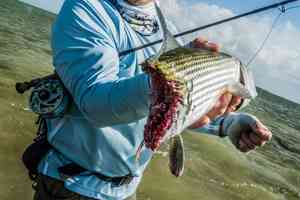

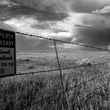

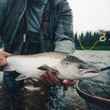
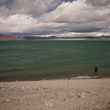
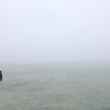

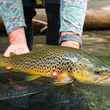

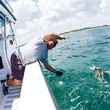
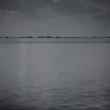
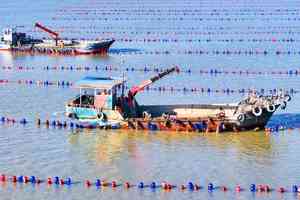
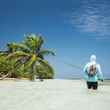

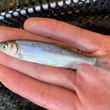
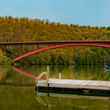

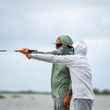
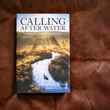
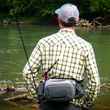

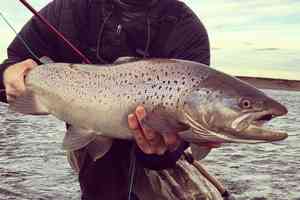
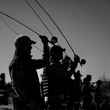
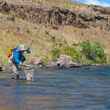
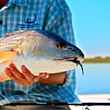
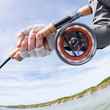
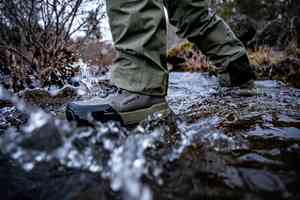
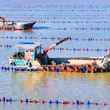
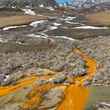
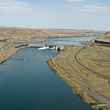
Comments
Glenn Dotter replied on Permalink
Great article!
Dale Hile replied on Permalink
Great article...I've found that after the first hard frost yellow jackets die off and work well on the Rogue River...dead drift either floating or nymphing.
Pages